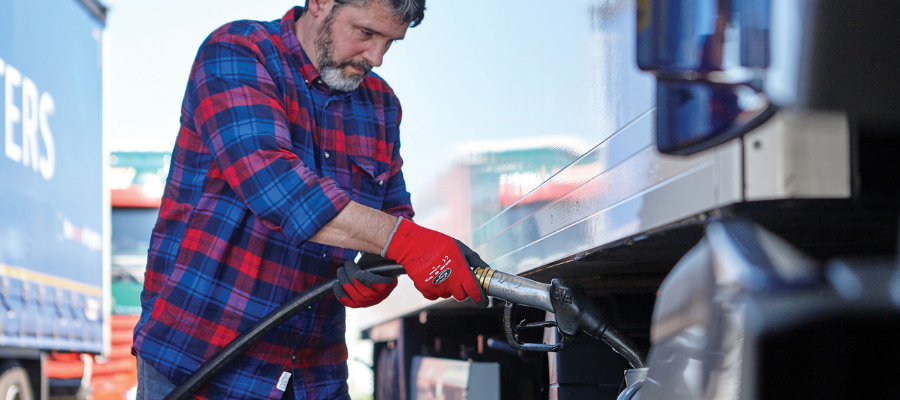🕒 Article read time: 2 minutes
Easing the fuel cost burden
Sponsored content

With road haulage profit margins rarely topping three per cent, fuel costs remain a significant area of concern for operators.
Beverley Wise, Regional Director UK & Ireland for Webfleet Solutions, explains how costs can be controlled using telematics.
The 5p cut in Fuel Duty may have been welcomed by transport operators, but the move followed 12-month petrol and diesel price increases of 33% and 38% respectively.
The need for smart systems and fuel strategies that can help deliver savings in the face of economic uncertainty and oil price volatility is as pressing as ever.
The role that telematics technology can play is widely recognised, but fleet insights must be utilised effectively to deliver meaningful efficiency improvements.
TECH INNOVATIONS FUELLING CHANGE
Electrification for long-haul road transport currently presents greater technical challenges than for cars and vans, and this has led to an extended 2040 sale end date for new fossil-fuelled HGVs.
While truck powertrains take shape, van operators can realise significant TCO (total cost of ownership) savings, with telematics platforms such as WEBFLEET offering dedicated software to signpost fleets’ electrification potential. Operations can also be optimised through connected tools that deliver insights into everything from mapped charging infrastructure and vehicle charging status to real time battery levels and remaining driving ranges.
FUEL: A MANAGEABLE COST
Where electrification is not yet feasible, or financially viable, telematics solutions remain invaluable for cost control.
By combining reporting intelligence – everything from vehicle location, routing, scheduling and driver behaviour scores to mpg and idling time, maintenance and fuel card information – trends can be easily identified and the root causes of fuel wastage tackled.
Businesses can analyse where and how employees are driving to determine the reasons behind fuel usage patterns. Incidents of unnecessary idling, for example – when drivers are parked, keeping their cabs warm or when vehicles are left waiting for extended periods during the loading and unloading of materials – can be pinpointed.
A low mpg might be attributable to journeys in residential areas or built-up locations, or it might be caused by harsh, inefficient, driving behaviour, which needs addressing through targeted training programmes.
These performance insights can be fed back to drivers in real time and enable transport managers to work with them collaboratively to improve driving styles.
The financial returns are clear. Scottish haulier Ian Craig Haulage increased mpg by 10 per cent using WEBFLEET, for example, while logistics specialists Corporate Solutions realised mpg improvements of 9.2 per cent.
TYRE EFFICIENCY IN THE SPOTLIGHT
Telematics data analysis on transport routes and the stops that are made can also help determine the most cost-effective tyre options.
Vehicle tyres are being engineered with ever greater precision to maximise efficiency and minimise rolling resistance. Bridgestone’s Ecopia H002 tyres, for example, which employs the innovative NanoPro-Tech compound to reduce energy loss, alongside design details such as slim beads and buttresses, can help cut fuel bills by more than £180,000 a year for an average long-haul fleet.
Such cost control solutions may ultimately prove business critical as transport managers double down on their efforts to ease the fuel cost burden.
*Visit Webfleet Solutions' website for more information
Published On: 14/04/2022 16:00:31

Comments Section
If you are a Logistics UK member login to add comments.